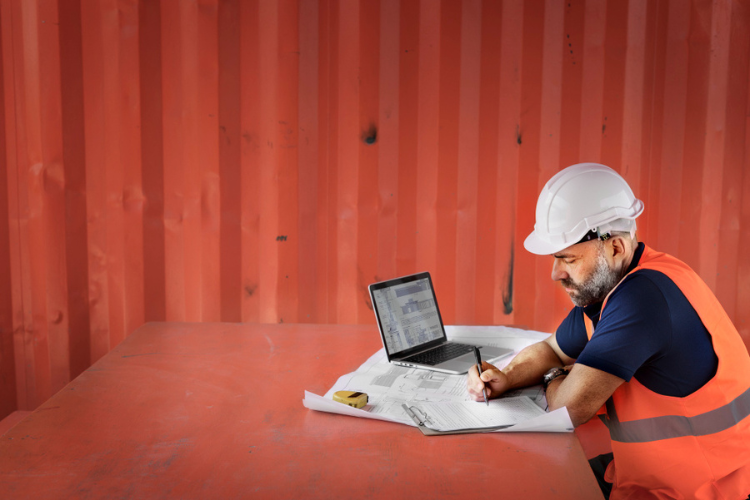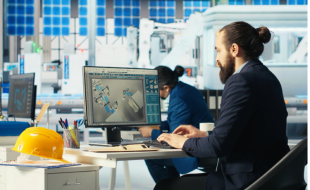Table Of Contents
- What Are The Engineered Surface Advantages?
- 1. Superior Strength And Durability
- 2. Easy Maintenance And Cleaning
- 3. Hygiene And Food Safety
- 4. Resistance To Stains, Chemicals, And Liquids
- 5. Consistency In Design And Colour
- 6. Scratch And Abrasion Resistance
- 7. Heat Resistance
- 8. Resistance To Frost And Impact
- 9. Environmentally Responsible Manufacturing
- 10. Aesthetic Flexibility And Innovation
- 11. Maintenance And Long-Term Value
- 12. The Perfect Balance Of Design And Performance
- Redefining Surfaces
Advantages Of Engineered Surfaces Over Traditional Marble
Marble has that old-school charm, like something you’d see in a historic museum or a European hotel lobby. Most of us grew up thinking, “Oh wow, marble means fancy.” And sure, it still does.
But real life today involves messy cooking, clumsy guests, coffee rings, and kids doing homework on the countertop. So somewhere along the way, people started saying, “Hey… looks are great, but can it survive Tuesday?”
That’s kind of how engineered surface advantages entered the chat. They keep the beauty but come with a few modern upgrades that actually make sense for homes and offices now.
What Are The Engineered Surface Advantages?
So instead of treating this as a dramatic battle — marble vs. engineered — let’s just talk through what actually happens when real humans live with these materials every day.
1. Superior Strength And Durability
Marble forms naturally underground, which sounds poetic, until you notice a random chip or hairline crack that wasn’t there last month.
Drop a heavy pot on it, and well… you’ll hear that painful sound. Engineered slabs, though, are made intentionally — ground minerals, resins, reinforcement materials, basically a recipe designed to avoid those weak points.
They feel sturdier, denser, a bit like they’re built to take a beating without complaining about it. In busy kitchens or commercial spaces, that difference becomes pretty obvious over time.
2. Easy Maintenance And Cleaning
Anyone who’s ever owned marble eventually learns “don’t spill lemon juice.” Or wine. Or honestly, anything too colorful. It needs sealing, polishing, and a little bit of luck. Because marble absorbs liquids like it’s thirsty.
Engineered surface advantages don’t really play that game; they’re non-porous, so cleaning usually just means soap, water, and done.
No emergency Googling at midnight about how to remove turmeric stains. That’s why restaurants, stores, and even rental homes love it: fewer headaches, fewer warnings to guests.
3. Hygiene And Food Safety
Engineered slabs aren’t antibacterial superheroes, but since they don’t have tiny pores, bacteria can’t settle in as easily. Wipe them down, and that’s pretty much it. Some manufacturers even get NSF certifications, which basically says “yes, this is safe for food.”
Brands like Neotra push it a bit further with hygiene features, NSF food-safe approval, processes aligned with IGBC sustainability goals, so people who care about eco-friendly choices don’t feel guilty about their countertops looking nice.
4. Resistance To Stains, Chemicals, And Liquids
Marble reacts to acidity like a dramatic movie character — one drop of vinegar and suddenly there’s a mark. Cleaning products, oils, sauces, red wine… all potential problems.
Engineered surface advantages are generally designed to resist those everyday liquids, so they stay looking consistent with regular cleaning. It’s nice not having to hover over your guests with coasters and napkins, honestly.
5. Consistency In Design And Colour
Marble slabs are like siblings — related, but never identical. Gorgeous, yes, but unpredictable. Matching several pieces across a large island or hotel lobby can turn into a puzzle.
Engineered surfaces skip the surprise factor by offering consistent patterns and colors, so installations look smooth and unified instead of slightly mismatched. Designers love that because fewer headaches = happier clients.
6. Scratch And Abrasion Resistance
Life is full of sharp things — keys, knives, metal bags, toolboxes, you name it. Marble scratches faster than most people expect, especially in homes where the kitchen counter becomes a multipurpose workspace.
Engineered slabs tend to be tougher on the surface, so minor friction doesn’t immediately leave battle scars. That makes them practical for reception desks, office areas, big families — basically anywhere humans exist.
7. Heat Resistance
A quick reality check — neither marble nor engineered slabs want a sizzling hot pan dropped on them. They’re durable, but not invincible.
So trivets, hot pads, or literally anything between the surface and the burning dish are still a smart idea. It’s a small habit that saves a lot of heartbreak.
8. Resistance To Frost And Impact
Engineered slabs usually hold up well through seasonal temperature changes, so outdoor kitchens or semi-open areas aren’t out of the question.
But like any stone-like material, a hard impact — think a heavy tool falling from countertop height — can chip the edge.
With proper installation, edge protection, and normal care, they perform reliably indoors and outdoors. For façade surface use, though, weather-resistant engineered materials are the safer pick.
9. Environmentally Responsible Manufacturing
Sustainability conversations aren’t going away anytime soon. Marble quarrying requires digging into landscapes, transporting heavy blocks, and leaving behind environmental footprints.
Engineered surfaces, made in controlled facilities, allow better waste management and resource efficiency. But resin-based production still has environmental considerations, so certifications and responsible manufacturing — like what IGBC-aligned brands follow — help ensure you’re not choosing style at the planet’s expense.
10. Aesthetic Flexibility And Innovation
Engineered materials can look almost identical to marble — veining, texture, depth — but they also come in designs marble could never naturally produce.
Concrete-inspired, ultra-white, textured matte, bold industrial tones — there’s a wider creative playground. So if someone wants a statement kitchen or a minimalist office with subtle detailing, engineered surfaces offer more freedom.
11. Maintenance And Long-Term Value
Marble owners usually plan for ongoing upkeep — sealing, polishing, stain removal, and occasional repairs. Engineered slabs generally avoid most of that, which lowers long-term cost and effort.
The upfront price may be similar or higher depending on the brand, but because they last longer with fewer interventions, many people consider them a smarter investment for busy households or commercial spaces.
12. The Perfect Balance Of Design And Performance
Engineered surfaces feel like a middle ground — the beauty and elegance people want, mixed with durability and practicality.
They fit modern lifestyles, where aesthetics matter but cleaning shouldn’t become a weekend hobby. That balance is why architects, homeowners, and builders keep recommending them.
Redefining Surfaces
Engineered surface advantages aren’t trying to erase marble’s legacy — marble will always have its moment. But for everyday living, working, cooking, hosting, spilling, cleaning — engineered slabs just make life easier.
They offer style, consistency, hygiene, durability, and a bit of peace of mind. So whether you’re designing a brand-new home or updating a commercial space, they’re a future-ready choice that still feels timeless.














